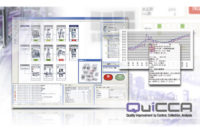Wastewater Management: High-Quality H2O
By Andy Hanacek,
Executive Editor
Executive Editor
The cleanliness of the discharge of processing plants improved in leaps and bounds in the last 25 years.
Mother Nature should be smiling.
What may not have been the top priority for many businesses, processing plants included, decades ago — protecting the environment — has become a very high priority for everyone as wastewater treatment regulations and technology advanced to give Mother Nature a helping hand in the fight against pollution.
Today, according to John Starkey, vice president of environmental programs for the U.S. Poultry & Egg Association, regulations have gotten tougher, with a total nitrogen limit having been instituted for the first time a year ago and limits on the amount of phosphorus that effluent can contain. That said, some poultry processors sit comfortably above the limits.
“A number of plants today, particularly those doing complete nitrogen removal, discharge a potable water fit for human consumption,” Starkey says.
Companies that send their effluent wastewater to be further treated at a city treatment plant have fewer steps than those processors who are discharging their wastewater directly into a body of water. Very strict regulations exist for those companies, but those are the processors who fully treat their wastewater and do a good job at it, Starkey says.
“Anyone who is direct-discharging, that water has to support aquatic life,” Starkey explains. “You have to be able to take your effluent, put a flathead minnow in it, and it’s got to be able to live. You have to prove that and have it periodically tested and submit those results.”
Although regulations pushed processors harder to improve their discharge since the 1980s, companies did have assistance at their disposal.
Whether a plant uses a dissolved air-floatation system that leads to a city sewer system for further treatment or direct-discharges into a body of water after treatment of wastewater in an activated sludge system, engineers and operators of the management systems have seen technology step up to the plate and make the operation more efficient and thorough.
Starkey cites three advances in equipment, particularly, that rippled through the industry and improved a process that remained pretty basic just 25 years ago.
“When I started in the industry [25 years ago], we were still using pH litmus test paper, because you could not get a pH meter that would stand up to the environment we were putting it in because it was too wet,” Starkey says. “Now, of course, we have pH meters that go directly in the line and don’t have to be touched but once a month for a minor calibration, and you don’t have to replace them for a year.”
Starkey highlights that as just one improvement in the instrumentation available to wastewater managers, and says that programmable logic controllers made a huge impact on the industry.
“[The pH meter] gives a signal out to a programmable logic controller that not only can proportionately pace a pump but also has a memory to remember how fast the rate of change was last time and adjust it according to that,” he continues. “So, to go from pH paper to that in 25 years is a big improvement.”
Starkey explains that variable-frequency drives impacted the industry tremendously, because they allow operators to slow down motors when full capacity of the motor is not necessary, which ends up saving money and wear and tear. When attached to a pump, Starkey adds, variable-frequency drives can further help.
“Now I’m only pumping exactly what I need instead of two times as much and then turning the pump off and cycling that pump forever, which runs up a higher electric bill every time you cycle it,” he says. “But also, from a flow perspective … and how you size all your units and operate them, it’s closer to a constant instead of extreme variability.”
Finally, the increased availability of and access to computers, spreadsheets, and database programs resonated very well in the industry, given that the process is a very analysis-intensive operation. Starkey explains that wastewater is a living organism that goes through life cycles, divisions, and other actions that must be addressed. The computer age allowed technicians to aggregate all the data, look at months’ worth of it at a time, and create trend and indicator charts to track performance.
“That tells you, ‘When this set of circumstances happens, my performance suffers or my costs go up, and I need to be on the lookout for that occurrence,’” he continues. “That data was always there, but there was no way to get your hands around it in a timely manner.”
Those improvements in instrumentation, technology, and data analysis have taken the industry to a much higher level of treatment, but, in Starkey’s words, it’s still as much art as it is science.
“In this day and age, when we have every further-processing operation under the sun in these plants, the characteristics of that wastewater change minute to minute,” he says. “We’re trying to remove and precipitate grease and proteins and any other materials that may be in there by adding a chemical, and you have to match that dose, and the dose has to be correct or it won’t be effective.
“We’ve come a long way in terms of having programmable logic controllers that help us with some of that, but still, there’s nothing like having a calibrated eyeball connected to a thinking brain to make the system work.”
And a new set of requirements in the technology and process means the industry also needs better-skilled and better-experienced people to run the operation.
“As an engineer, I like to think we can design a beautiful system, and we can,” Starkey says. “But if people don’t want to or won’t operate it properly, it really doesn’t matter how fancy that treatment plant is. It has to run, and it needs people to run.
“As limits have gotten stricter, as our waste stream has become more concentrated, the skill level of the people we need has gone up. We need folks that have a higher skill level in terms of both education and experience.”
Companies succeeding in treating wastewater to a high quality discharge have that circumstance already figured out, and Starkey says it won’t change in the future. Ability and communication will win out.
“The companies that can find, keep, and train qualified people in this area, and then have these people communicate with people in quality assurance and processing so that both have a little understanding about what the other is doing, those are the companies that have and will continue to succeed.” NP






Report Abusive Comment